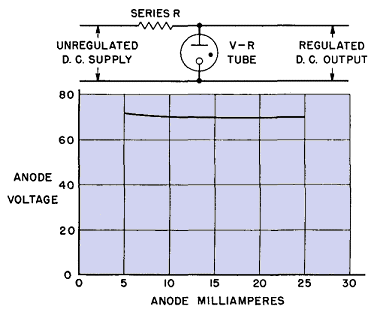| Electronic Transformers and Circuits is a free introductory textbook on transformers and related circuits. See the editorial for more information.... |

|

Home  Electronic Control Transformers Electronic Control Transformers  Static Voltage Regulators Static Voltage Regulators |
||||||||||






|
||||||||||
Static Voltage Regulators
Automatic regulators of various kinds have been devised for keeping comparatively small amounts of power at a constant voltage.
Constant supply frequency is a condition for resonance at rated voltage; with the good frequency control of modern power systems this condition is generally fulfilled. Load power factor variations cause output voltage to change. Some regulators are provided with taps to minimize this effect. Output wave form contains a noticeable third harmonic, because the large magnetizing current of L2 must flow through appreciable impedance in L1. Owing to the partial saturation of reactor L2, it tends to operate at a high temperature and requires good ventilation. Practical regulators are in use with ratings from 25 v-a to several kva.
Electronic voltage regulators make use of a gas-filled regulator tube, which has a v-a characteristic such as that shown in Fig. 198.
Current drawn by this tube changes between wide limits with virtually no change in voltage. A series resistor is ordinarily used to limit the current. When output current in excess of the "V-R" tube rating is desired, it may be used as a voltage reference for a current amplifier. Some voltage regulators amplify the difference between a voltage reference and the output voltage of a rectifier or generator. This difference is called the error voltage. The amplifier output reduces the generator field if generator output voltage is high and increases the field if the output voltage is low. Likewise, motor speed may be regulated by the difference between tachometer output and a voltage reference. Or the angular position of a motor may be controlled electrically as desired by remote means. These means are discussed in books on servomechanisms.(1) If a thyratron amplifier is used as part of a servo system, one thyratron may produce an effect opposite to that of the other, such as reversing current in the load. This amplifies the power controlled by error voltage. In many modern regulator and servo systems, magnetic amplifiers are used. These devices are described in Magnetic Amplifiers.
|
||||||||||
Home  Electronic Control Transformers Electronic Control Transformers  Static Voltage Regulators Static Voltage Regulators |
||||||||||
Last Update: 2011-02-17



